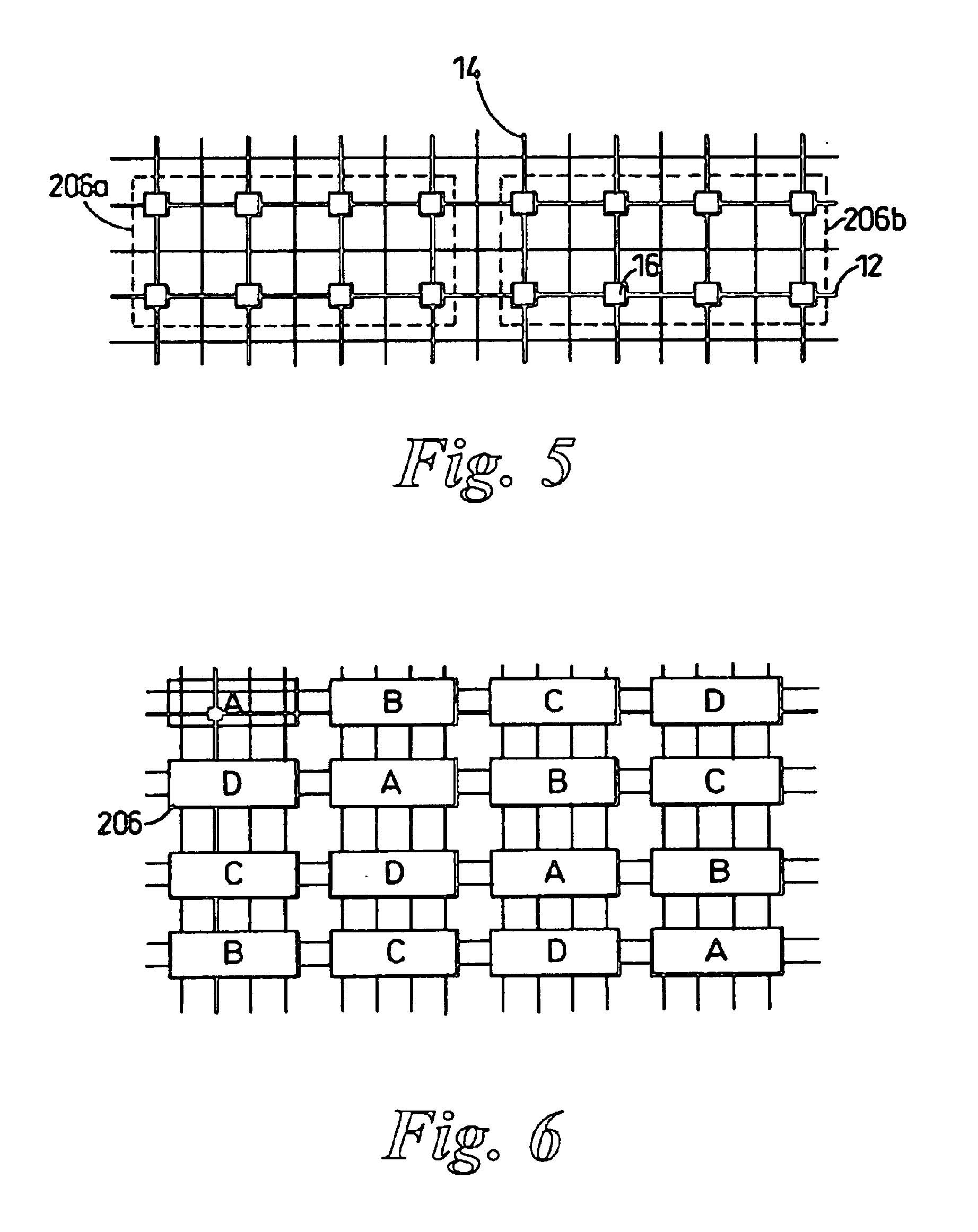
MRAM data layout diagram from U.S. Patent No. 6981196, granted 27 Dec 2005.
Magnetoresistive random access memory (MRAM) is a form of non-volatile storage that consumes little power and operates at high speed. In the 1990s, companies such as Motorola, IBM, and Infineon positioned MRAM as a replacement for volatile storage devices such as flash cards, intending to capture the enormous market for memory in cell phones, digital cameras, music players and personal digital assistants.
During 1999–2001, I led a Hewlett-Packard technical team using mathematical modelling to analyse and predict the failure modes of MRAM devices. By identifying the critical physical parameters early on, we were able to direct engineering design effort where it would be most effective and so reduce development risk.
We also showed how to achieve a high level of reliability from components that were individually unacceptable, by combining innovative data layout on the MRAM device with careful use of error-correction coding. This allowed faster development using a simpler, cheaper manufacturing process. Our work resulted in 16 granted patents, but the details were considered too sensitive to be published in journals. Samsung subsequently acquired the rights to several of these patents from Hewlett-Packard.
